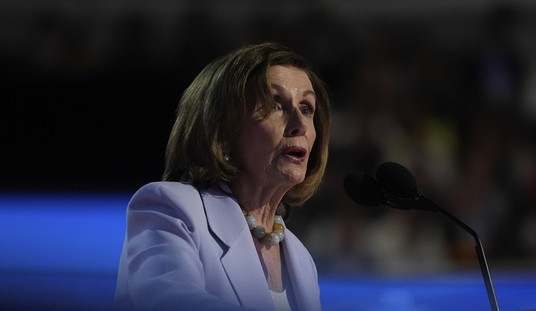Texas and California stand as similar states heading in very different directions. Both are territorially large and boast large urban centers and robust high-tech industries. Both are racially diverse. Both have extensive coastlines and large energy and agribusiness industries. Both share borders with Mexico and have outsized economies. If either California or Texas were their own country, they would rank in the global top 20 and outmuscle most other countries on earth.
But California, a Democrat stronghold, suffers from unemployment about two points above the national average. Its state and city budgets flirt with bankruptcy, and its population is fleeing. Unions and their demands clog the public sector, making government in the state increasingly unaffordable, so taxes keep going up. Texas, a Republican stronghold and right-to-work state, has unemployment well below the national average, its books are balanced, and it’s always at or near the top in population growth over the past decade. Business survey after business survey rank Texas as one of the top states in which to do business; they rank California at or near the bottom. Companies are moving to Texas, and away from California. Property values have been stable in Texas despite the national bubble; they have rollercoastered in California. California’s tax burden remains one of the highest in the nation, while Texas’ is one of the lowest.
With much fanfare and hullabaloo, President Obama’s former campaign, Organizing for Action, recently launched a 10-year effort to turn red Texas into a true swing state. The plan, officially unveiled in a meeting in Austin on February 26 by Obama operative Jeremy Bird, hails the onset of Battleground Texas. Texas is not a swing state, at least not yet, but Battleground Texas intends to treat it like one in a sustained and systematic way so that it becomes one.
Democratic groups have tried, and failed, to turn back the clock on Texas’ shift from Democrat fortress as late as the 1980s to the Republican bastion that it is now without success. The most publicized of these, the Lone Star Project led by Washington, D.C., activist Matt Angle, was funded by trial lawyer cash to fight tort reform, voter ID, and push for left-wing policies. Its goal was to elect a Democrat speaker of the Texas House of Representatives by 2010 and elect a Democrat to statewide office — any statewide office. That year, though, Republicans made unprecedented gains and turned the Democratic caucus in the state House into a tiny club. Several Democratic officeholders defected to the GOP, further reducing the party’s power. Gov. Rick Perry trounced Democrat challenger Bill White, and no Democrat came close to winning any statewide office. Angle’s Lone Star Project is a lavishly funded failure.
Bird’s effort is different.
Where Angle stealthily developed a network of advocacy and “watchdog” groups like Texans for Public Justice, the Texas Freedom Network, the Texas Trial Lawyers Association, and the Back to Basics PAC to pose as non-partisan while relentlessly attacking Republican officials and policies in the media, Bird is taking a much more granular approach. Battleground Texas says it will be “people based,” and they mean it.
Battleground Texas will be a people based, metrics driven organization that is dedicated to the idea that volunteers, in their neighborhoods, can and do significantly impact local, state and national elections.
As a people based organization, we are focused on leadership development, training and empowerment. We work with volunteer leaders to ensure they have all the skills they need to successfully recruit new volunteers and register, persuade and turnout voters.
All of that sounds like political boilerplate, and it is. But there are significant mechanics behind Bird’s approach. Those mechanics have been proven to work in other states that President Obama managed to capture in 2008 and recapture in 2012, like Florida. They can work in Texas, too. They have already worked from Texas in other states.
According to information the Tatler has obtained from the Battleground Texas kickoff meeting, the mechanics behind Organizing for Action’s “people based” approach are at once simple and revolutionary. Bird’s team has developed a five-point contact plan for identifying and courting low-information, low-frequency voters. These voters are average folks who pay little attention to politics and current events and have left no trail allowing either party to identify which party they’re more likely to vote for. Bird’s volunteers call these prospects and use a script to ascertain whether they are persuadable to the Democrats’ point of view. Volunteers perform a “gut check” on the prospective voter, and these gut checks have proven to be accurate nearly 95% of the time. If the prospect is not identified as persuadable, then the volunteer files them away and does not call them again. But if the prospect appears to be persuadable, then the five-point plan comes into play. Volunteers will call the voter again, based on current events, to deliver information crafted to shape the prospect’s beliefs. For instance, if a volunteer has identified a suburban Fort Worth mom as a persuadable Democratic voter based on social issues, Todd Akin’s remarks on rape would have generated a second phone call. Richard Mourdock’s comments would have generated a third. A fourth call may have focused on the ObamaCare birth control mandate, casting it as a service to women and casting opposition to it as a “war on women.” The fifth call would have simply given the prospect information on where to vote. Job done. Someone who probably would not have voted at all has been processed over a few weeks into a likely Democratic voter. At the very least, they have become far less likely to vote for the party of Akin and Mourdock, who have been cast along with their party as villains. Obviously, none of the recent Democrats’ remarks on rape that aired during Colorado’s gun control debate would get any play at all in these calls. They are one-sided information streams, intended to create velocity on the way to creating a vote.
The simple part to this is that parties and campaigns have used phone banking for decades. But phone banking has not typically been used in this way, using follow-ups over a longer period of time, to turn an unidentified non-voter into a known quantity voter. Widespread and cheap VOIP phone technology and the Obama campaign’s massive and highly organized volunteer army work together to make the five-point system affordable, and the tactic of making the political phone call a source of tailored information that amounts to a running commentary on the campaign over time makes it effective.
Bird’s group used this system in 2012 in several swing states, capturing all of them. Democratic volunteers from Texas played critical roles; now Democratic volunteers from outside Texas will join in the effort to swing the Lone Star State.
Along with its emphasis on out-of-state events to manipulate voters in the state, BT intends to deceive Texas voters regarding what the Democrats actually want to do in Texas. Texas policy successes stand for themselves, but Democrats have consistently and relentlessly attacked them while holding up other, Democrat-controlled, states as models. Over the years, Texas Democrats have essentially parroted the national DNC message. If the national party was for ObamaCare, so was the state party. If the national party preferred California and Chicago governance over Texas governance, so did the state party. Texans tend to be pro-life and favor the Second Amendment; the Texas Democrats have consistently and loudly gone the other way on both. Bird’s group intends to cater its message to Texas, so that the national Democrats’ message does not scare off potential voters in traditionally conservative communities. The national Democratic platform of union power, high taxes, lavish government spending, weak national security, curtailed constitutional rights, and centralized government control does not play well in Texas. So the Battleground group intends to avoid explaining and detailing the Democrats’ plans as much as possible. They’re not jettisoning any of that. They just intend to hide it. Once elected to power, this Obama-centric group can be counted on to deliver Obama-style policies like those that are carving California hollow and turning Chicago into a war zone.
Where Angle’s media-centric approach failed expensively, Bird’s personal contact-centric approach could succeed on the cheap. It succeeded in defying the polls that in 2012 showed 2008 Obama voters less likely to turn out for him a second time, by minting entirely new voters through fear and disinformation. It will take millions of these new voters to make Texas competitive for the Democrats, but they’re playing a long waiting game and banking on the state’s rising Hispanic population to give them an edge. Up to now, they have waited in futility as Hispanic voters in Texas tend to split ticket vote, and do not vote proportionally to their population numbers. Bird’s five-point plan may change that by engaging unidentified voters across the state, misinforming them, and then turning them blue.
Texas is the cornerstone of the Republicans’ national ambitions. Democrats can win the White House without it, but Republicans cannot. If Battleground Texas succeeds and the state falls to the Democrats, the electoral map and the direction of American politics will shift decisively for years, if not decades, to come.









Join the conversation as a VIP Member